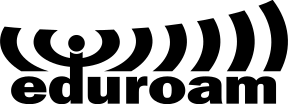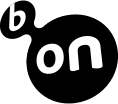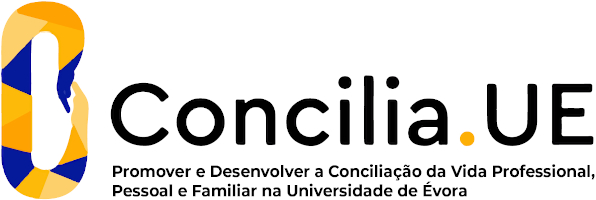2024
Human Biochemistry I
Name: Human Biochemistry I
Code: QUI13699L
6 ECTS
Duration: 15 weeks/156 hours
Scientific Area:
Biochemistry, Biological Sciences
Teaching languages: Portuguese
Languages of tutoring support: Portuguese, English
Regime de Frequência: Presencial
Presentation
Basic Curricular Unit.
Human Biochemistry I provides an integrated overview of Human Biochemistry, focusing on the structure and function of Biomolecules in the human body. It should be followed by Human Biochemistry II, of which it is complementary.
Human Biochemistry I provides an integrated overview of Human Biochemistry, focusing on the structure and function of Biomolecules in the human body. It should be followed by Human Biochemistry II, of which it is complementary.
Sustainable Development Goals
Learning Goals
The general objective of this curricular unit is to provide students with a set of knowledge in the field of Integrative Human Biochemistry. Specifically, it is intended that the students acquired knowledge allowing them to understand the structure and function of the main biomolecules, the role of inorganic elements in the chemistry of life, as well as to evaluate the importance of these for cells and organisms.
Students should be able to identify the different types of biomolecules, macromolecules, biopolymers and macromolecular aggregates, to know their properties and functions in cells and organisms, to relate molecular changes with cellular and body dysfunctions, and apply acquired knowledge to new situations in this or other scientific area. The development of an analytical and research attitude will be emphasized, valuing the exploration of information, the interpretation of results of experimental work and the development of a scientific rigor and a scientific attitude.
Students should be able to identify the different types of biomolecules, macromolecules, biopolymers and macromolecular aggregates, to know their properties and functions in cells and organisms, to relate molecular changes with cellular and body dysfunctions, and apply acquired knowledge to new situations in this or other scientific area. The development of an analytical and research attitude will be emphasized, valuing the exploration of information, the interpretation of results of experimental work and the development of a scientific rigor and a scientific attitude.
Contents
Introduction: Life Is Made of Molecules: Selected Illustrative Examples: 1-The Molecular Origin of Life; 2-Viruses; 3-Molecules as Tools, Drug Discovery, and Development.
The Chemistry and Physics of Life: The Basics of Chemistry and Physics in Cells and Tissues.
The Families of Biological Molecules: Lipids and their Supramolecular Assemblies. Saccharides, their Polymers and Derivatives: Mono- and Polysaccharides; Molecular Conjugates of mono- and of oligosaccharides. Nucleic Acids. Amino acids and their polymers: Peptides and proteins; Structure and function in proteins; Cooperative Interplay between tertiary- and quaternary-Level structure; Proteinopathies. Enzymes.
Introduction to Metabolism: Consecutive reactions Without and With enzymes; The basis of enzymatic catalysis and its impact in Metabolism.
The Regulation of Metabolisms: Inhibition and Activation of Enzymes by Ligands. The Availability of primary precursors in a Metabolic Pathway; Key molecules in energy Metabolism.
The Chemistry and Physics of Life: The Basics of Chemistry and Physics in Cells and Tissues.
The Families of Biological Molecules: Lipids and their Supramolecular Assemblies. Saccharides, their Polymers and Derivatives: Mono- and Polysaccharides; Molecular Conjugates of mono- and of oligosaccharides. Nucleic Acids. Amino acids and their polymers: Peptides and proteins; Structure and function in proteins; Cooperative Interplay between tertiary- and quaternary-Level structure; Proteinopathies. Enzymes.
Introduction to Metabolism: Consecutive reactions Without and With enzymes; The basis of enzymatic catalysis and its impact in Metabolism.
The Regulation of Metabolisms: Inhibition and Activation of Enzymes by Ligands. The Availability of primary precursors in a Metabolic Pathway; Key molecules in energy Metabolism.
Teaching Methods
The teaching/learning process is based on the individual work of the students, supported by theoretical classes (35h), theoretical practices (13h) and laboratory practices (15h) and the recommended bibliography.
The evaluation system is organized to consider the work carried out by the student in the different components. The practical component (PS) is continuously evaluated considering the attendance, the performance in the laboratory and the analysis, interpretation and discussion of results (oral and/or essay). The theoretical and theoretical-practical component (TS) can be evaluated in two modalities: continuous (written test) or by final exam.
The final score (FS) will be calculated on base of practical component score (PS), and of the theoretical component score (FS): FS=0.25*PS+0.75*TS.
The evaluation system is organized to consider the work carried out by the student in the different components. The practical component (PS) is continuously evaluated considering the attendance, the performance in the laboratory and the analysis, interpretation and discussion of results (oral and/or essay). The theoretical and theoretical-practical component (TS) can be evaluated in two modalities: continuous (written test) or by final exam.
The final score (FS) will be calculated on base of practical component score (PS), and of the theoretical component score (FS): FS=0.25*PS+0.75*TS.





















